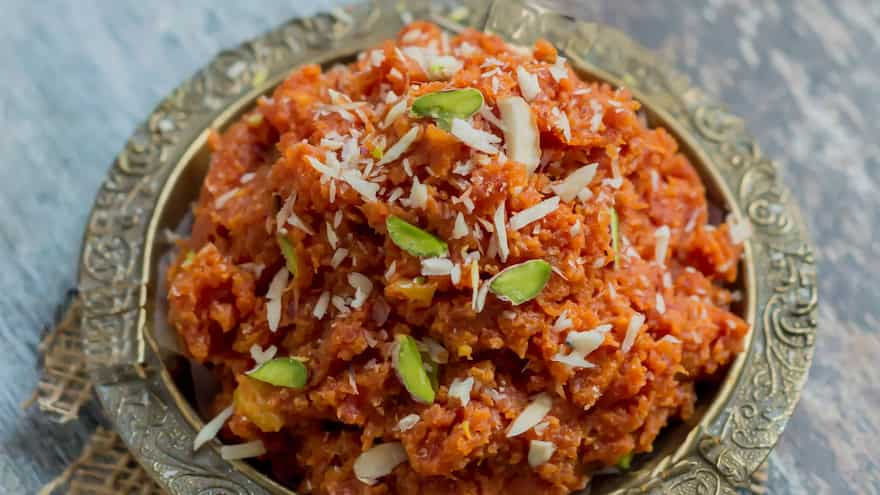When it comes to Indian festivals, one thing that cannot be missed are the sweet treats that are an integral part of the celebrations. From gulab jamuns and rasgullas to barfis and laddus, there are a plethora of delicious sweets that are relished during festivals in India. But have you ever wondered why sweets are such an important part of Indian festival celebrations and festivities? Well, let's find out!
First off, in Indian culture, sweets are regarded as auspicious delicacies. During prayers and ceremonies, gifting sweets to deities is believed to bring fortune and prosperity. Hence, we make sure to prepare a wide range of sweets to offer to the gods and goddesses during festivals. Second, sweets are a symbol of joy and happiness. They are associated with festivities, and a festival wouldn't be complete without them. Whether it's Diwali, Holi, Eid, or Christmas, sweets are an essential element of the celebrations, and we distribute them as a gesture of goodwill and joy with our family, friends, and neighbours. Thirdly, sweets are a way to bond with loved ones. In India, festivals are a time for family gatherings and reunions, and sweets play a crucial role in bringing people together. It is a time to exchange sweets with each other, share recipes, and learn new techniques for making these delicacies.
Moreover, sweets are a reflection of the diversity of Indian culture, as it is a land of many languages, religions, and customs where every region has its own unique sweet dishes. From rasgullas of Bengal to gulab jamuns of North India, and pedas of Maharashtra to laddoos of South India, sweets reflect the rich and varied culinary heritage of India.
Lastly, sweets are a way to indulge and enjoy the festival season. It's the time when we let go of diet plans and indulge in our favourite sweets guilt-free. So, whether it's the iconic motichoor ladoos of Diwali or the mouth-watering seviyan of Eid, sweets hold a special place in the hearts of Indians during festivals. From their significance in religious rituals to their role in bringing people together, sweets are an essential part of Indian culture and will continue to be so for generations to come.
Here are cultural significance of some of the popular Indian sweets.
Rasgulla
Recipe credits - Taste Unfold
Rasgulla
Rasgulla is often considered a symbol of love and affection and is exchanged as a gift during festivals like Diwali, Holi, Durga Puja, and Raksha Bandhan, and other special occasions. Rasgulla is a popular Indian sweet that is made by curdling milk to make chenna, or cottage cheese, which is then kneaded and shaped into small balls. These balls are then boiled in a sugar syrup until they become soft and spongy. Its place of origin became a matter of dispute between the states of Odisha and West Bengal, but it was eventually recognized as a Geographical Indication product of both states.
Gulab Jamun
Gulab Jamun is a popular dessert that originated in mediaeval India and was influenced by Persian cuisine. It is made by using khoya (reduced milk), which is rolled, deep-fried, and then soaked in sugar syrup. This dessert represents the sweetness and richness of life and is often served during Diwali, Eid, weddings, and other celebrations. Although the dessert is ubiquitous in India, there are regional variations, such as the dry khoya-based gulab jamun of Rajasthan.
Laddu
This round-shaped sweet delicacy is prepared with flour, sugar, and ghee, and can also include variations using ingredients like besan (gram flour), coconut, and sesame seeds. It holds a significant place in Hindu culture and is believed to be a favourite of Lord Ganesha, who is worshipped during the festival of Ganesh Chaturthi. It is also commonly offered to deities and is an essential part of auspicious occasions like weddings and naming ceremonies. In South India, laddus made with sesame seeds or groundnuts are often prepared during the winter harvest festival of Makar Sankranti, which is celebrated with great joy and fervour.
Halwa
 Picture credit - Unsplash
Picture credit - Unsplash
Kheer
Kheer is a traditional rice pudding associated with several Hindu festivals, such as Diwali, Holi, and Janmashtami. This sweet dish is prepared by cooking rice with milk, sugar, and nuts or dried fruits. There are regional variations to this dish, such as payasam in South India, which replaces sugar with jaggery and is flavoured with cardamom. Kheer holds significant mythological and religious importance. It is believed that Lord Shiva is fond of kheer, which is often offered to him during worship. Additionally, the story of Krishna and Sudama in Hindu mythology is associated with kheer, making it a revered dish among devotees. In some regions of India, kheer is prepared during the harvest festival of Pongal/Makar Sankranti as well. Additionally, it is often served as a prasad (offering) to deities during puja (worship) ceremonies.


